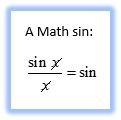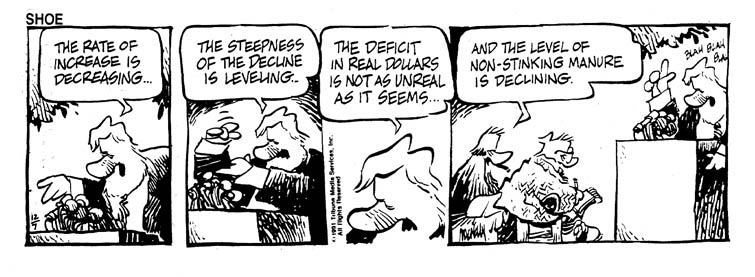AP Questions Type 3: Graph Analysis
The long name is “Here’s the graph of the derivative, tell me things about the function.”
Students are given either the equation of the derivative of a function or a graph identified as the derivative of a function with no equation is given. It is not expected that students will write the equation of the function from the graph (although this may be possible); rather, students are expected to determine key features of the function directly from the graph of the derivative. They may be asked for the location of extreme values, intervals where the function is increasing or decreasing, concavity, etc. They may be asked for function values at points. They will be asked to justify their conclusions.
The graph may be given in context and students will be asked about that context. The graph may be identified as the velocity of a moving object and questions will be asked about the motion. See Linear Motion Problems (Type 2)
Less often the function’s graph may be given, and students will be asked about its derivatives.
What students should be able to do:
- Read information about the function from the graph of the derivative. This may be approached by derivative techniques or by antiderivative techniques.
- Find and justify where the function is increasing or decreasing.
- Find and justify extreme values (1st and 2nd derivative tests, Closed interval test a/k/a Candidates’ test).
- Find and justify points of inflection.
- Find slopes (second derivatives, acceleration) from the graph.
- Write an equation of a tangent line.
- Evaluate Riemann sums from geometry of the graph only. This usually involves familiar shapes such as triangles or semicircles.
- FTC: Evaluate integral from the area of regions on the graph.
- FTC: The function, g(x), may be defined by an integral where the given graph is the graph of the integrand, f(t), so students should know that if,
 , then
, then  and
and  .
.
In this case, students should write  on their answer paper, so it is clear to the reader that they understand this.
on their answer paper, so it is clear to the reader that they understand this.
Not only must students be able to identify these things, but they are usually asked to justify their answer and reasoning. See Writing on the AP Exams for more on justifying and explaining answers.
There are numerous ideas and concepts that can be tested with this type of question. The type appears on the multiple-choice exams as well as the free-response. Between multiple-choice and free-response this topic may account for 15% or more of the points available on recent tests. It is very important that students are familiar with all the ins and outs of this situation.
As with other questions, the topics tested come from the entire year’s work, not just a single unit. In my opinion many textbooks do not do a good job with integrating these topics, so be sure to use as many actual AP Exam questions as possible. Study past exams: look them over and see the different things that can be asked.
The Graph Analysis problem may cover topics primarily from primarily from Unit 4, Unit 5, and Unit 8 of the CED
For previous posts on this subject see October 15, 17, 19, 24, 26 (my most read post), 2012 and January 25, 28, 2013
Free-response questions:
- Function given as a graph, questions about its integral (so by FTC the graph is the derivative): 2016 AB 3/BC 3, 2018 AB3
- Table and graph of function given, questions about related functions: 2017 AB 6,
- Derivative given as a graph: 2016 AB 3 and 2017 AB 3
- Information given in a table 2014 AB 5
- 2021 AB 4 / BC 4
- 2021 AB 5 (b), (c), (d)
- 2022 AB3 / BC3 – graph analysis, max/min
- 2023 AB 4 / BC 4 – graph stem, max/min, concavity, L’Hospital’s Rule
Multiple-choice questions from non-secure exam. Notice the number of questions all from the same year; this is in addition to one free-response question (~25 points on AB and ~23 points on BC out of 108 points total)
- 2012 AB: 2, 5, 15, 17, 21, 22, 24, 26, 76, 78, 80, 82, 83, 84, 85, 87
- 2012 BC 3, 11, 12, 15, 12, 18, 21, 76, 78, 80, 81, 84, 88, 89
A good activity on this topic is here. The first pages are the teacher’s copy and solution. Then there are copies for Groups A, B, and C. Divide your class into 3 or 6 or 9 groups and give one copy to each. After they complete their activity have the students compare their results with the other groups.
Revised March 12, 2021, March 18, 2022, June 4, 2023


